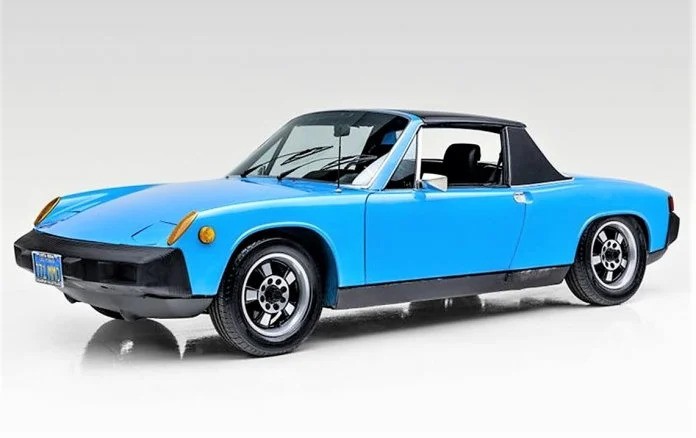
The Porsche 914, a distinctive sports car produced between 1969 and 1976, marked a significant period in automotive history through a unique collaboration between Porsche and Volkswagen. Initially designed as an affordable sports car that could appeal to a broader market, the 914 was unique for its time with its mid-engine layout and the option of having either a four-cylinder Volkswagen engine or a six-cylinder Porsche engine.
This setup not only made the 914 distinct from many of its contemporaries but also imbued it with balanced handling characteristics that were praised by enthusiasts.
Development and Launch
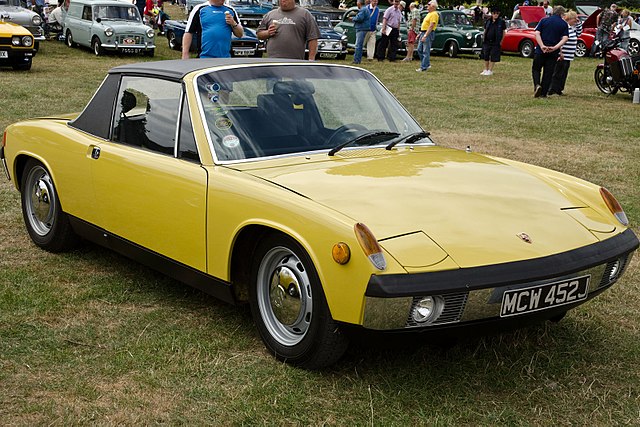
Collaboration between Porsche and Volkswagen
The Porsche 914’s development was the result of a partnership aimed at replacing both Porsche’s 912 and Volkswagen’s Karmann Ghia. With both companies looking to consolidate their positions in the sports car market without significantly increasing costs, a joint venture was the strategic solution.
The collaboration was based on leveraging Porsche’s renowned engineering prowess and Volkswagen’s mass-production capabilities. This cooperation was intended to produce a vehicle that was economically viable for Volkswagen and technically appealing for Porsche.
Design and Engineering
Porsche’s approach to the 914 involved creating a design that was not only revolutionary in aesthetics but also in functionality. Opting for a mid-engine layout, the 914 provided a low center of gravity and near-perfect weight distribution, a rarity for cars in its class and price range.
The body design featured a removable targa top, which was innovative for the time and offered drivers the flexibility of converting their car from a coupe into a quasi-convertible.
Model Specifications
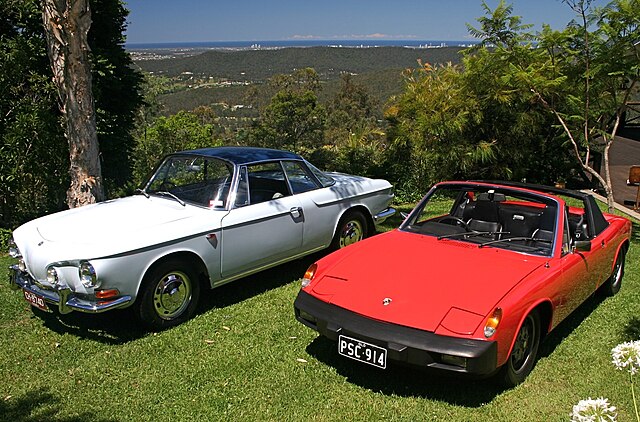
Engine and Performance
Throughout its production run, the 914 was available with different engine options, tailored to varying market demands and price points. The base models typically housed a 1.7-liter, and later a 1.8-liter four-cylinder engine supplied by Volkswagen, which offered modest performance but excellent reliability.
For those desiring more power, Porsche provided a 2.0-liter six-cylinder engine derived from the 911, transforming the 914 into a significantly more spirited machine capable of competing with more prestigious sports cars.
Chassis and Handling
The construction of the 914’s chassis emphasized rigidity and lightness, with the use of advanced materials and design techniques. The handling of the 914 was particularly lauded for its responsiveness and agility, attributes directly attributable to its mid-engine configuration and balanced weight distribution.
This made the 914 popular among driving enthusiasts who appreciated a more engaged driving experience.
Special Editions and Variants
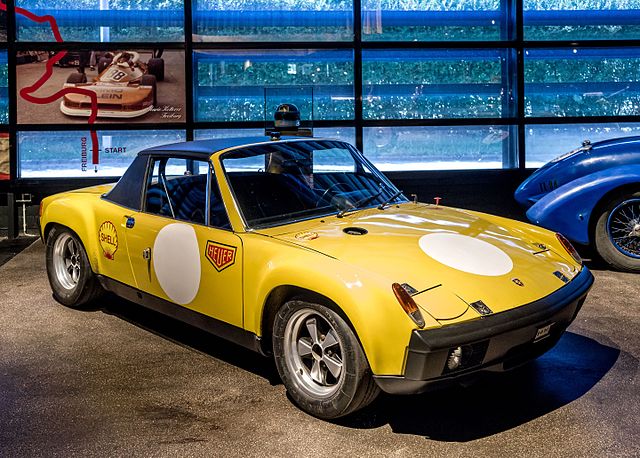
The Porsche 914’s production span saw the release of several notable special editions and variants that not only enhanced its appeal but also added to its legacy as a collector’s item. These limited versions brought unique features and performance tweaks that differentiated them from the standard models, catering to enthusiasts seeking exclusivity and enhanced driving experience.
Porsche 914/6 GT
The most famous variant of the 914 was the 914/6 GT, a high-performance model built to compete in motorsport but available to the public in limited numbers. The 914/6 GT featured a more powerful engine taken directly from the Porsche 911, making it significantly faster and more capable than the standard four-cylinder versions.
Additionally, it was equipped with flared fenders, larger brakes, and a modified suspension system to handle the increased power and provide better handling dynamics.
Limited Edition Models
In 1974, to commemorate the success of the Porsche cars in the Can-Am series, a limited edition of the 914 was released, commonly referred to as the “Bumblebee” and “Creamsicle” due to their distinctive paint schemes. The “Bumblebee” was painted in black with a Sunflower Yellow front bumper and side stripes, while the “Creamsicle” featured a Light Ivory base with Phoenix Red accents.
These models not only stood out for their vibrant colors but also included upgraded features such as dual horns, fog lights, and a center console with an additional gauge.
European vs. North American Versions
The European and North American markets received slightly different versions of the 914. European models typically had smaller bumpers and were equipped with more powerful engine options earlier in the production cycle compared to their American counterparts.
This was due to stricter emissions regulations in the United States, which led to detuned engines to meet the requirements, affecting performance.
The 914 S
Another rare variant was the 914 S, known primarily among Porsche aficionados and rarely acknowledged in mainstream automotive histories. The 914 S was rumored to include a series of performance enhancements similar to those of the 914/6, but packaged with the four-cylinder engine, making it a bridge between the standard four-cylinder models and the more powerful six-cylinder 914/6.
These special editions and variants not only highlight the versatility of the Porsche 914 as a platform but also underscore its enduring appeal. Collectors and enthusiasts often seek out these rare models, which continue to command a premium in the classic car market due to their limited numbers, unique features, and significant performance upgrades.
Their existence reaffirms the 914’s status as a truly collectible and beloved sports car, celebrating its engineering heritage and distinctive style.
Market Reception and Historical Context
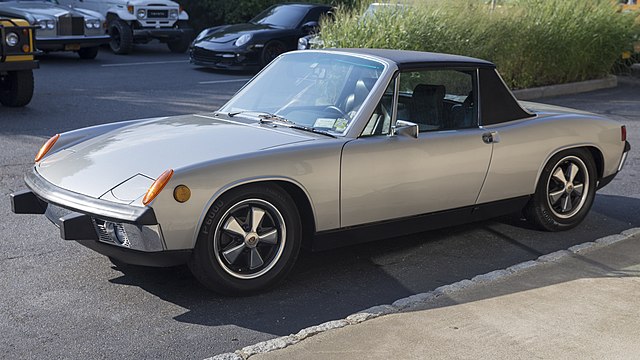
Initial Market Reception
At its launch, the Porsche 914 faced mixed reviews. While some praised its innovative design and enjoyable driving dynamics, others critiqued it for its perceived lack of power, especially in the four-cylinder models, and its unconventional styling. However, over time, the 914 gained a loyal following and is now celebrated for its uniqueness and the driving pleasure it offers.
Racing Heritage
The racing variant, the 914/6 GT, made a mark in motorsports, showcasing the model’s potential in competitive settings. It achieved notable successes in various international events, including a class victory at Le Mans, which helped to cement the 914’s reputation as a capable sports car.
Design Features
Exterior and Interior Design
The Porsche 914’s design was ahead of its time, featuring a minimalist and functional approach that contrasted sharply with the more elaborate styles of the 1960s and 70s. Its squared-off front and rear sections, combined with a low-slung silhouette, emphasized its sporty intentions.
Inside, the 914 was equally Spartan, prioritizing function over luxury, with simple gauges, a flat dashboard, and bucket seats that provided support during spirited driving.
Legacy and Collectability

Influence on Later Models
The 914’s impact on Porsche’s design and engineering can be seen in subsequent models, particularly in how Porsche continued to explore and refine the mid-engine layout in later vehicles like the Boxster, which shares many of the conceptual foundations first seen in the 914.
Collectability and Current Valuation
Today, the Porsche 914 holds a special place in the pantheon of classic cars. Its growing rarity, coupled with its historical significance, has led to increased collectability and rising prices in the classic car market. Well-preserved examples, especially the six-cylinder 914/6, are highly sought after by collectors and can command premium prices.
Conclusion
The Porsche 914 stands as a testament to innovative collaboration and engineering. Despite its mixed initial reception, its balanced driving dynamics and unique design have earned it a revered status among classic car enthusiasts. As a pioneer of the mid-engine sports car, the Porsche 914 not only enriched Porsche’s illustrious history but also left a lasting legacy on the automotive landscape.
